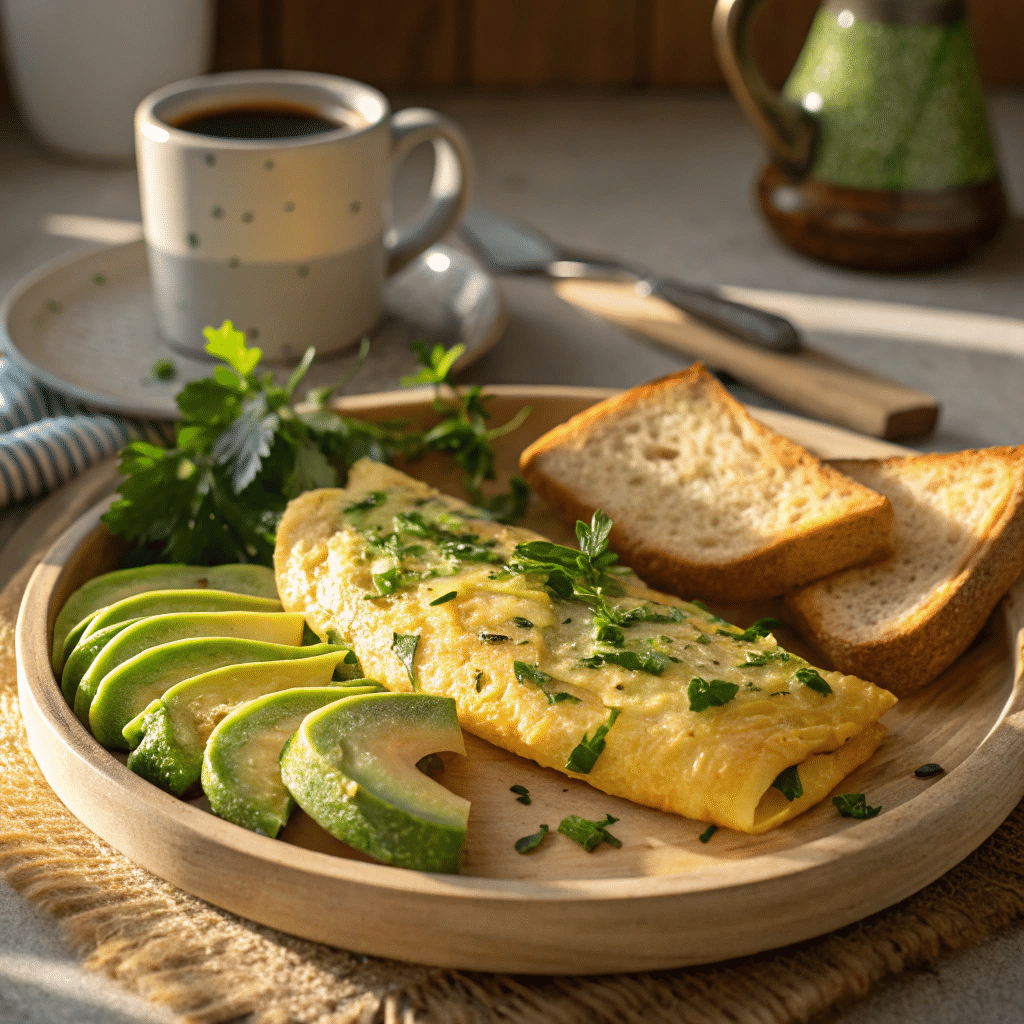Introduction
I didn’t grow up eating a French omelette. Ours were always golden, cooked through, and usually filled with whatever leftovers were in the fridge. It wasn’t until my thirties, flipping through a cookbook I barely understood, that I saw one done the French way soft, pale, no browning, no fuss. It looked plain. Too plain. But then I made one. The texture surprised me. Smooth. Custardy. I didn’t even miss the cheese. I started making them more often, sometimes late at night, just for myself. There’s something deeply satisfying about turning three eggs and butter into something that feels refined. And fast.
Table of Contents
Table of Contents
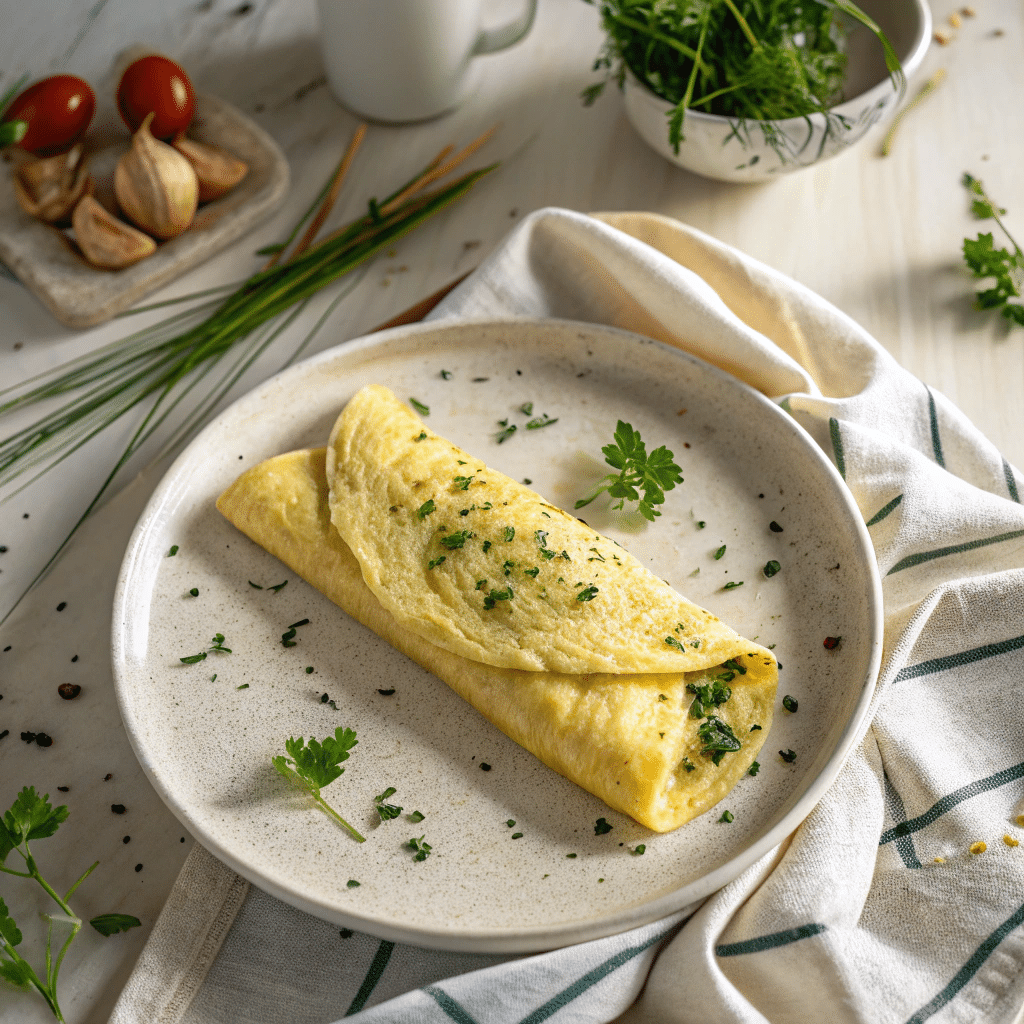 Print
Print
how to make a fluffy french omelette like a chef perfectly
- Total Time: 10 mins
- Yield: 1 omelette 1x
- Diet: Vegetarian
Description
Creamy, classic French omelette made simply with eggs, butter, and gentle technique—perfect for breakfast or brunch.
Ingredients
3 large eggs 1 tbsp unsalted butter Pinch of salt Optional: chopped chives or fresh herbs
Instructions
1. Crack the eggs into a bowl and whisk until fully combined. 2. Heat a nonstick skillet over medium-low heat and melt the butter. 3. Pour in the eggs and stir continuously with a spatula in small circles. 4. Once the eggs start to set but are still soft on top, stop stirring. 5. Tilt the pan and gently roll the omelette toward the edge. 6. Slide it onto a plate, seam side down. Add herbs if using.
Notes
Don’t overheat the pan—medium-low is key. Serve immediately for best texture. You can use avocado oil if avoiding butter, but flavor may change.
- Prep Time: 5 mins
- Cook Time: 5 mins
- Category: Breakfast
- Method: Stovetop
- Cuisine: French
Nutrition
- Serving Size: 1
- Calories: 210
- Sugar: 0g
- Sodium: 170mg
- Fat: 18g
- Saturated Fat: 8g
- Unsaturated Fat: 9g
- Trans Fat: 0g
- Carbohydrates: 1g
- Fiber: 0g
- Protein: 11g
- Cholesterol: 370mg
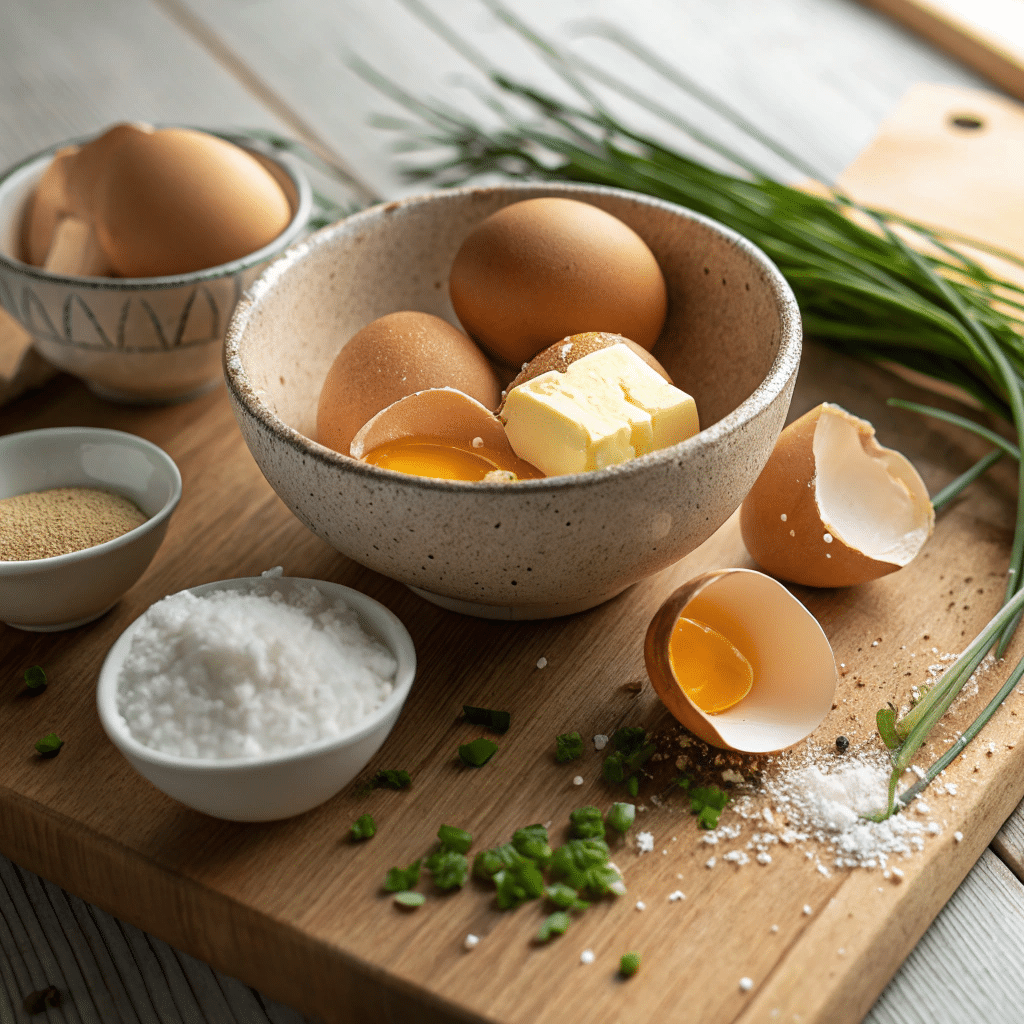
Learning the French Omelette the Hard Way
One morning, it finally worked
First tries? Disasters. Not even close. The eggs browned. I flipped too hard. One time, the entire omelette folded into itself like a sad taco and stuck to the pan. But I kept going. I read a bit. I watched someone make it with just a fork and wrist flick. I got a nonstick pan and tried again. That time, it didn’t brown. It moved like silk across the pan. It folded with the side of a spatula and landed softly on the plate. I cut in and it was pale yellow just warm enough. That was it. A French omelette. No magic, just heat control and timing.
Why it’s worth doing right
There’s no need to load it up. The French omelette lives in its simplicity. You don’t want crispy bits or gooey cheese centers. It’s about the way the eggs just barely set, then fold. Sometimes I’ll scatter chopped chives inside, but often I leave it plain. If I feel like something more filling, I serve it next to this veggie and egg tortilla or have a green smoothie on the side. Early on, I found this French omelette technique that helped me rethink how little it takes. Once you’ve made a proper one, you won’t go back to rubbery diner-style eggs.
What Usually Goes Wrong (and How I Learned to Fix It)
It rips. It browns. Sometimes it stiffens.
My early French omelettes always looked wrong. Either the bottom browned before the top even set, or the whole thing tore in half when I tried to fold. I remember one that sort of puffed up like a soufflé and then deflated, sad and rubbery. The pan was too hot. That’s the first thing to watch. Medium-low heat is where you want to be. And don’t walk away from it. Stir constantly little circles, soft movements. Use a fork or spatula, something flexible.
There’s no rule that says it has to be perfect. Some of my best-tasting ones looked a bit rough. I just roll the eggs gently when the top still has a slight sheen. The heat finishes the rest. One trick that helped me: instead of trying to fold in the pan, tilt it and let gravity help you guide the omelette out. Works like a charm.
If you want something light on the side, I like this avocado toast or a piece of fruit with homemade almond milk. It rounds out the plate nicely.
Butter’s traditional. But I’ve tried oil too.
Most recipes call for butter. It’s classic, and honestly, it adds flavor you don’t get with anything else. But a couple times, I’ve run out and used olive oil. It still worked. The eggs didn’t stick, and the texture stayed smooth, though slightly less rich. I wouldn’t recommend coconut oil it changes the taste. Avocado oil works better.
Once I even used both half butter, half oil when I wasn’t sure I had enough of either. It turned out great. That combo’s now my go-to when I want the silkiness of butter with the cleaner edges oil brings. A helpful lesson from this simple salad breakdown reminded me that tiny adjustments change everything. The French omelette is no exception.
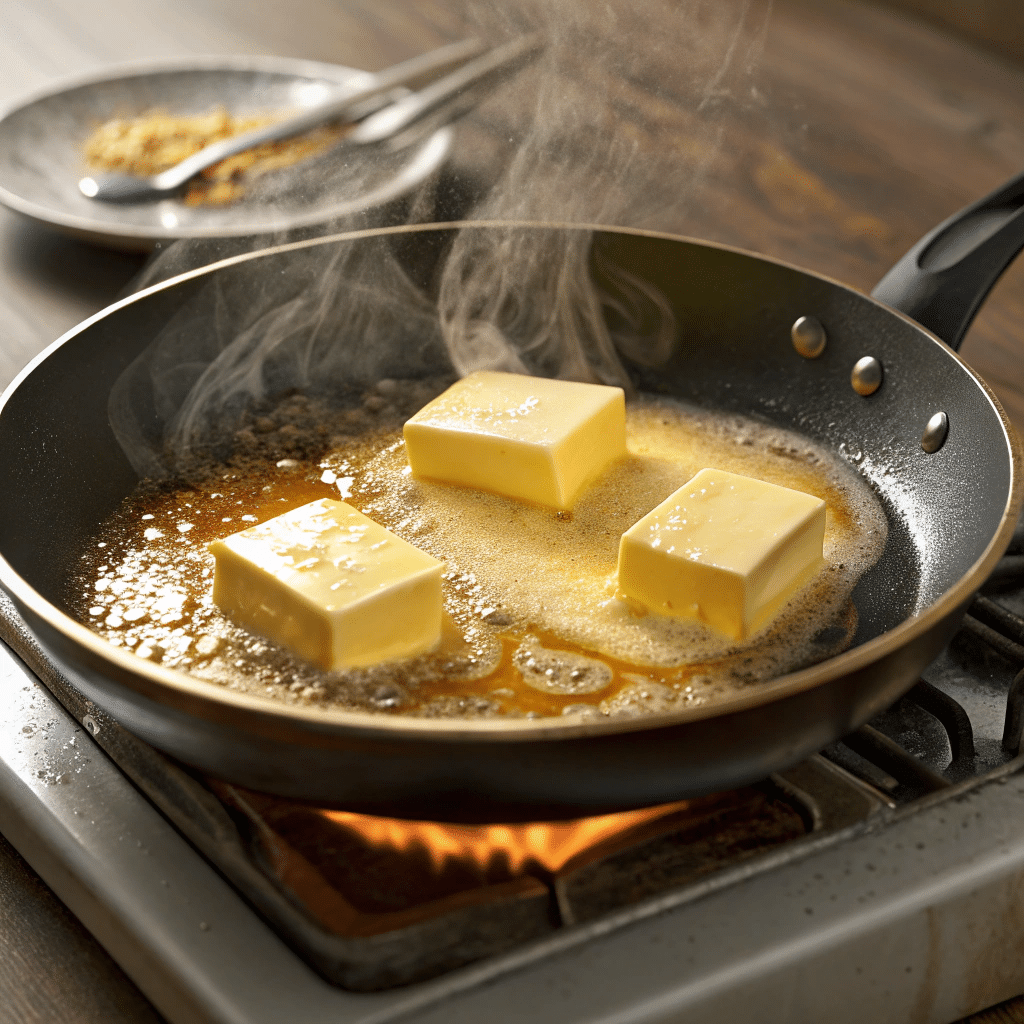
Cooking for More Than Just Yourself
How I manage French omelettes for guests
Making one French omelette? Easy enough. Making three or four while everyone waits around the kitchen? Different story. I learned the hard way during a Sunday brunch when I tried to cook them one after another. By the third one, the pan was too hot, and I ended up with a scrambled mess. Since then, I do things differently.
Here’s what works for me: crack and whisk the eggs in separate bowls ahead of time. Keep a medium-sized nonstick pan on gentle heat and clean it quickly between batches with a paper towel. Stack finished omelettes on a warm plate covered with foil. They hold their softness longer than you’d expect. Another trick? Get someone else to butter toast or pour drinks while you work. When everyone’s helping, it feels less like a rush.
If I want to keep things hands-off, I serve a veggie and egg tortilla or prep green smoothies in advance so there’s less pressure to get everything hot at once.
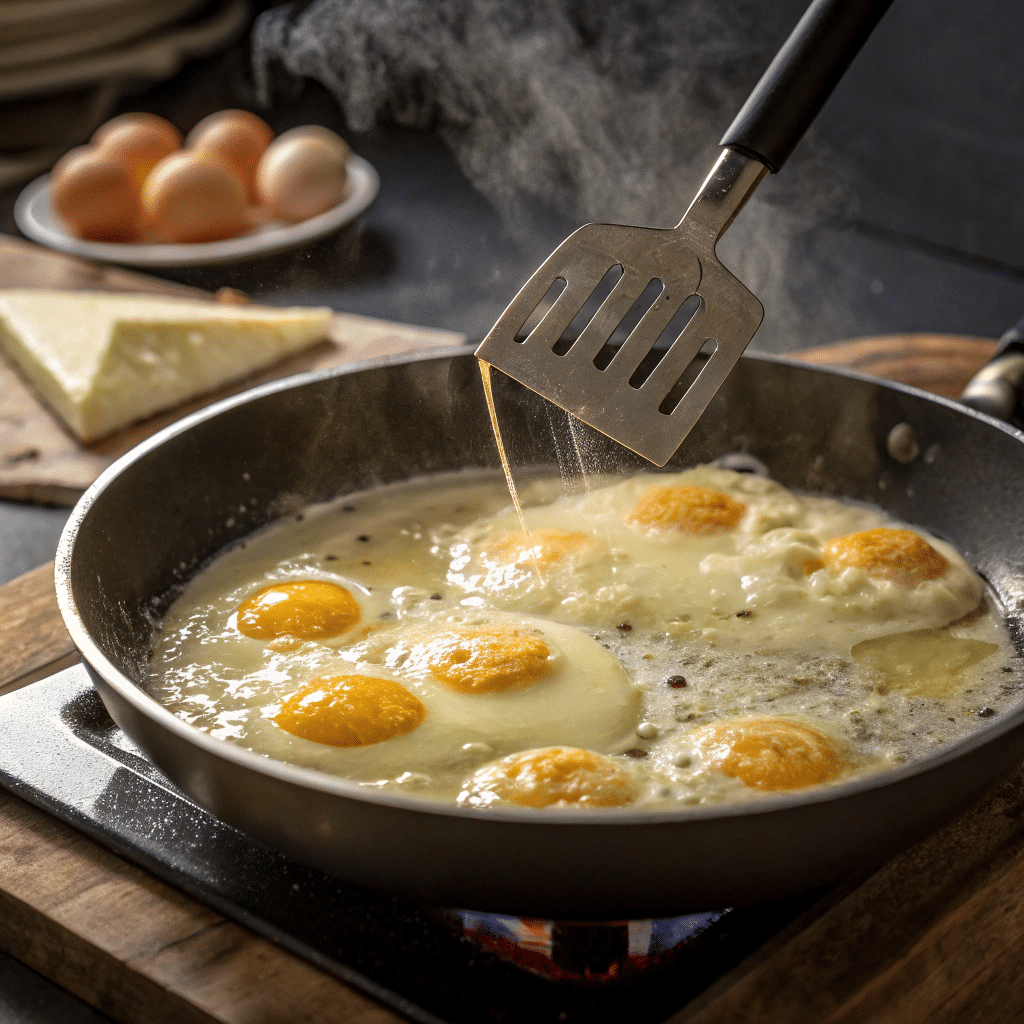
Trying a few twists (without losing the feel)
Sometimes I play with it just a little. A pinch of za’atar. A smear of soft cheese. I’ve even added leftover roasted garlic once, which gave the eggs this cozy depth I didn’t expect. But no matter what I try, I keep the French omelette itself clean and soft. The eggs are the focus. That’s the point.
A friend once brought over cucumber salad and we ate it next to the omelette, with just a squeeze of lemon. It was simple and felt thoughtful. That’s the kind of meal this is not fussy, just quietly good. You don’t need to reinvent anything. You just need a little patience and fresh eggs.
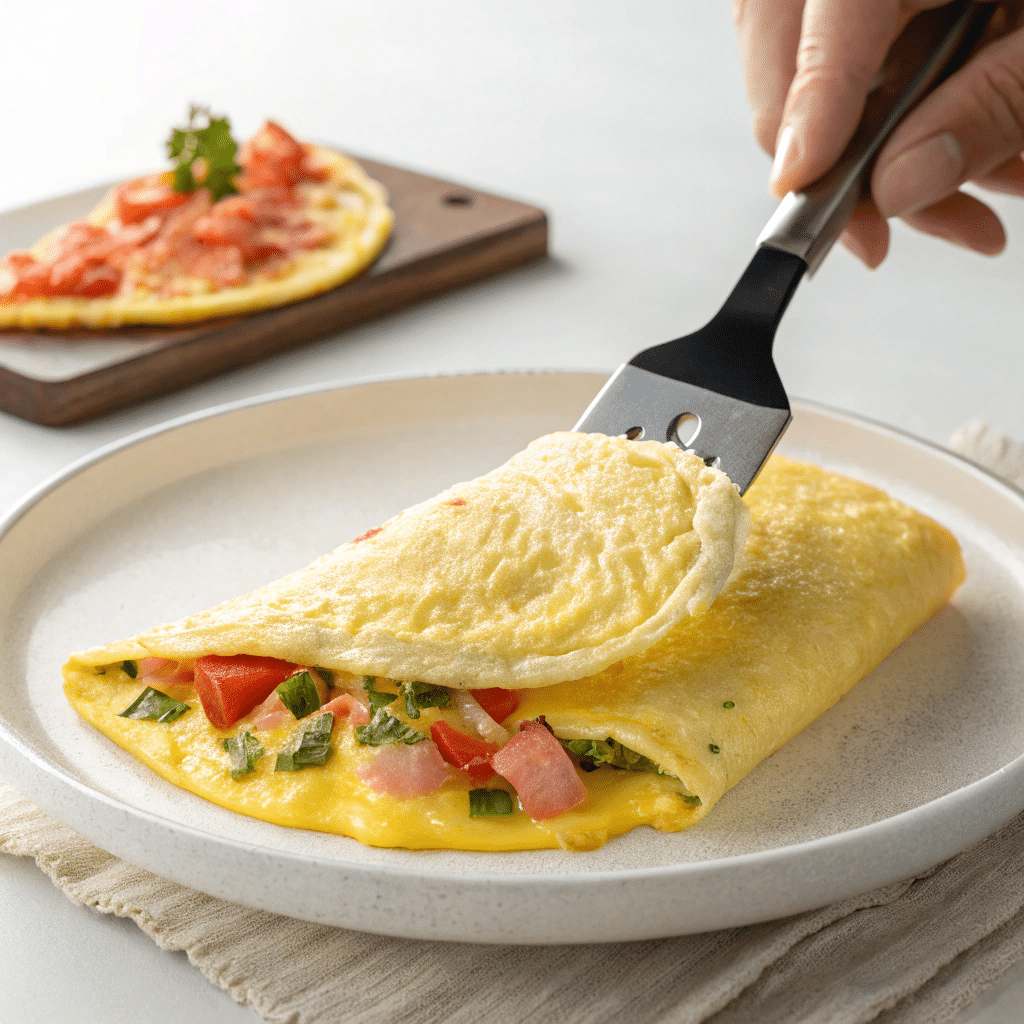
What I Wished Someone Told Me (and Now I Know)
The tearing thing? Happened to me constantly.
Back when I first tried to make this kind of omelette, I couldn’t get through one without it falling apart. It would rip while folding or stick near the edge. It drove me mad. I thought I was doing something wrong with the eggs—but it was the pan. And the heat. A hot surface sets the eggs too quickly. You need a gentle flame, soft stirring, and patience. Also, don’t stop stirring until it thickens up. That’s what holds it together.
I read a trick on a bagel recipe once—unrelated to eggs—but it said, “move slower when the food moves faster.” Funny how that stuck with me.
Runny? Kinda, yeah.
This one took me a while to accept. I used to cook eggs until bone dry. But with a French-style omelette, it’s not supposed to be firm all the way through. You want that center just slightly unset. Not raw, just soft. Think custard, not rubber. And it finishes cooking once you get it off the heat. I serve it warm, not piping hot, so the inside stays creamy. If I need something with more bite on the plate, I add a slice of this banana oat pancake or sometimes toast.
Butter’s better. But oil’s fine.
Butter’s what I reach for, no question. But I’ve made this dish with oil too—on mornings when the fridge was almost empty. It worked. The texture held up. The flavor changed, though—not worse, just different. I used avocado oil once and liked the clean taste. But I missed the richness that butter adds. If I had to choose, I’d always go with butter. But no rules here. If you’re out, don’t let that stop you. This cinnamon roll recipe talks about doing more with less, and I’ve carried that mindset into other recipes—including this one.
Cooking for others? It takes planning.
Making one omelette is simple. Making several while keeping them all warm? That’s a bit more. I’ve done it—just whisk each set of eggs in advance, and use the same pan for each. Wipe it clean between rounds. If they sit out a bit, no big deal. Cover them lightly and serve all at once. I usually add something filling, like smoked salmon bagels or fruit and yogurt. It stretches the meal, so you’re not flipping eggs forever.
The best thing I ever did was prep extras ahead—especially when guests come over. I once served it with this vegan salad spread, and no one even noticed the omelettes weren’t piping hot.
Conclusion
I don’t chase perfect folds anymore. I just want soft eggs, maybe a sprinkle of salt. If I get that part right, I’m happy. Took me years to stop overthinking it. Now I cook one without even looking at a timer.
Still mess one up now and then. Still eat it. That’s the nice thing about the French omelette. Even when it’s off it’s still good.
